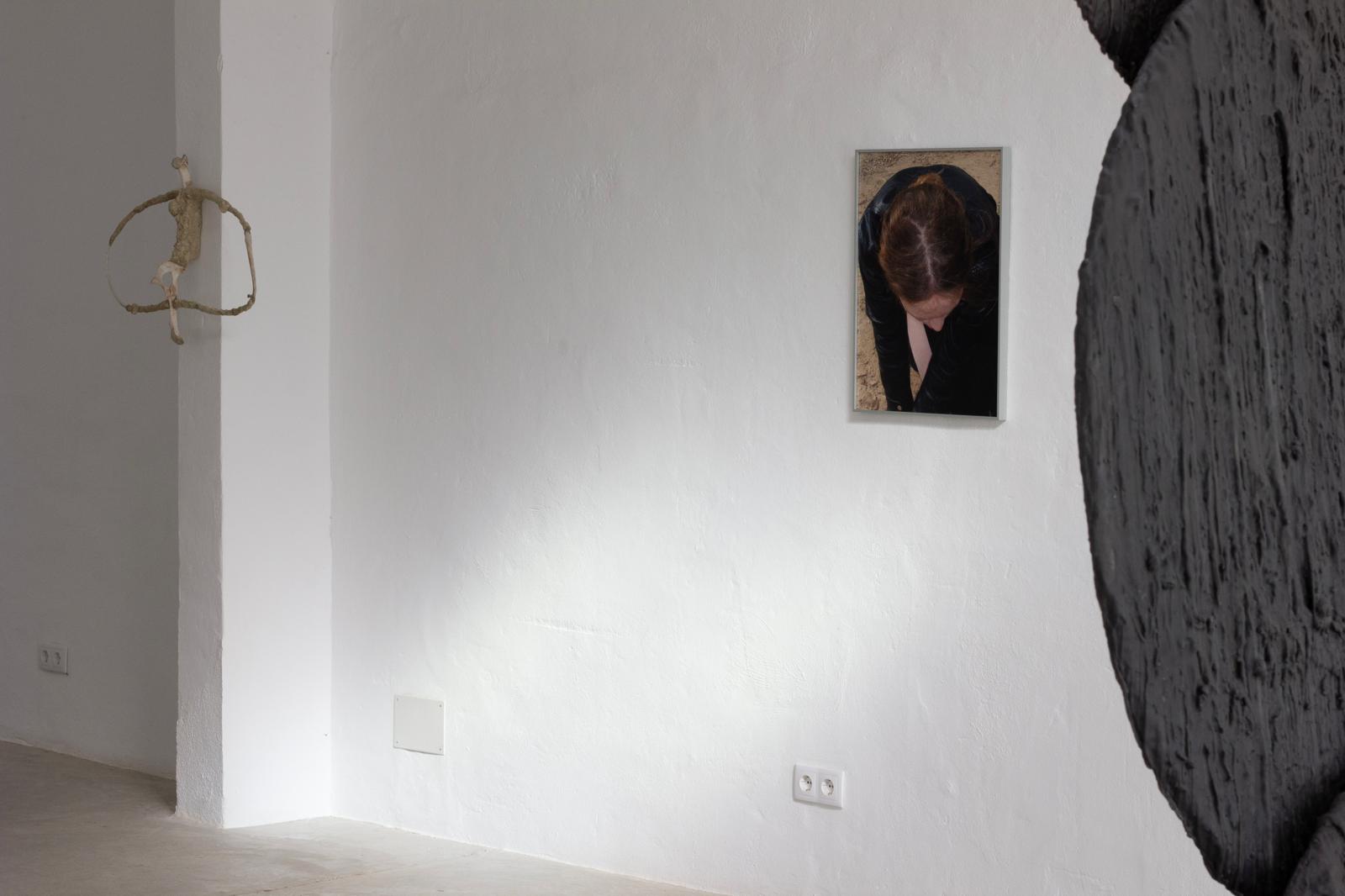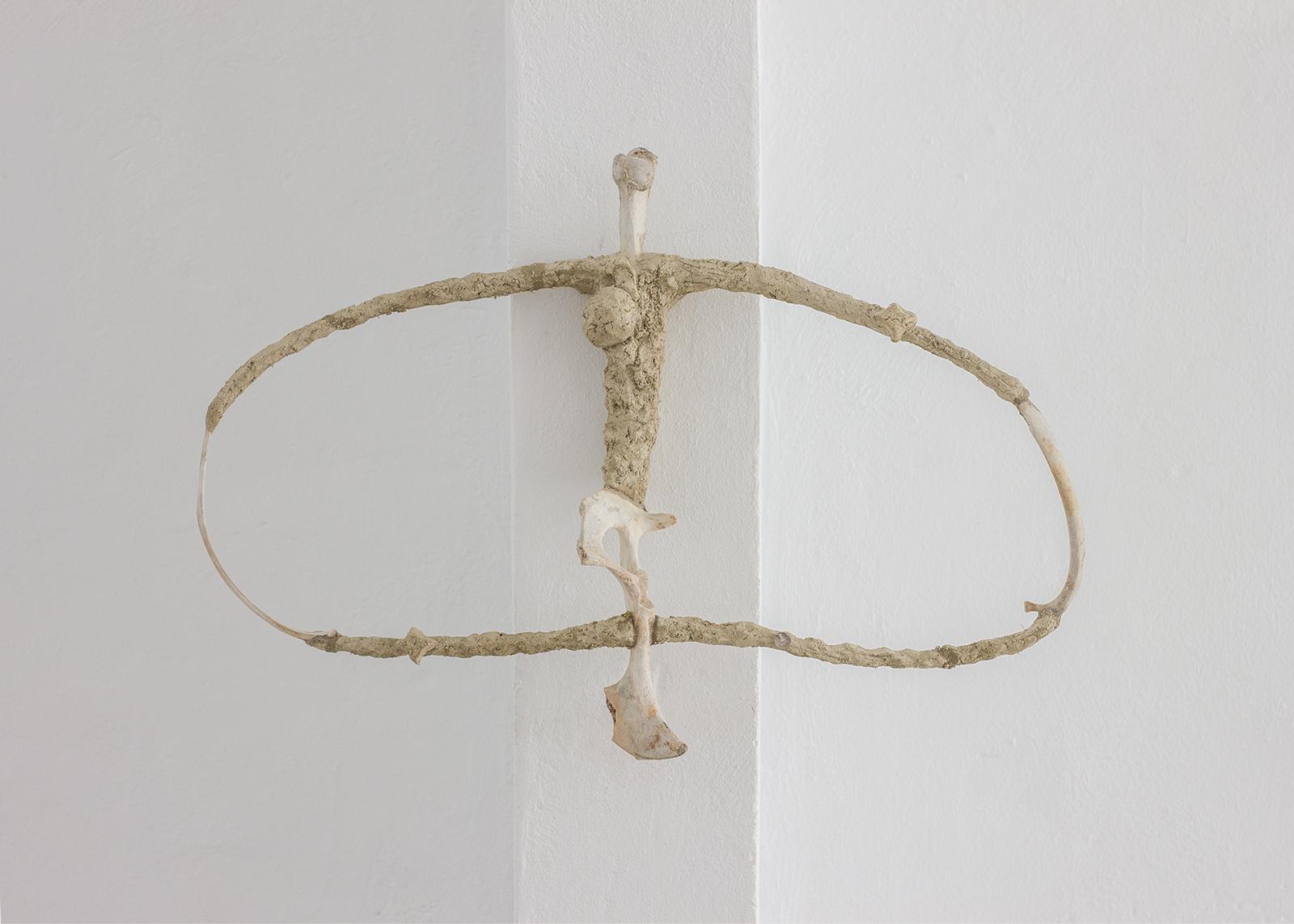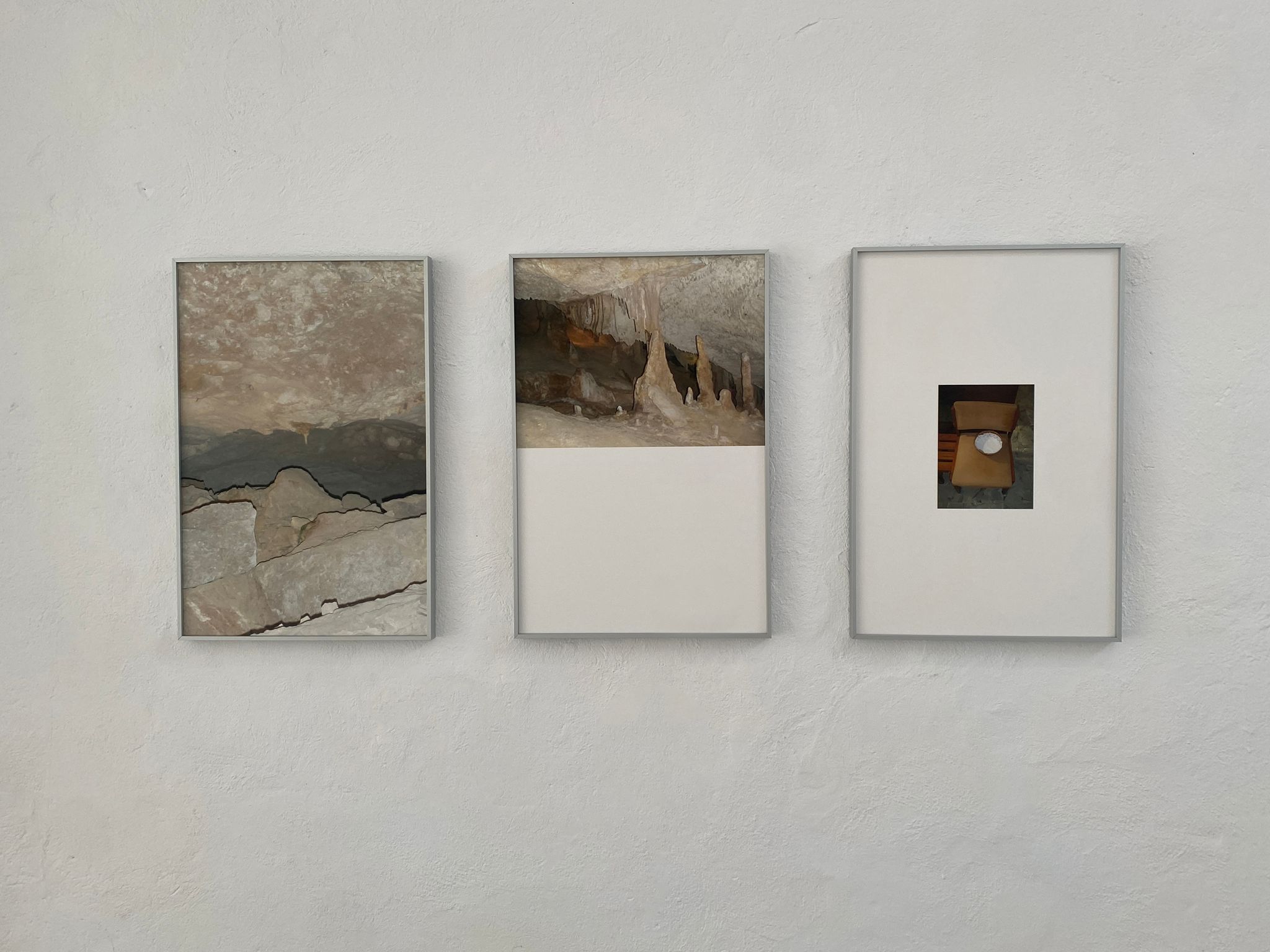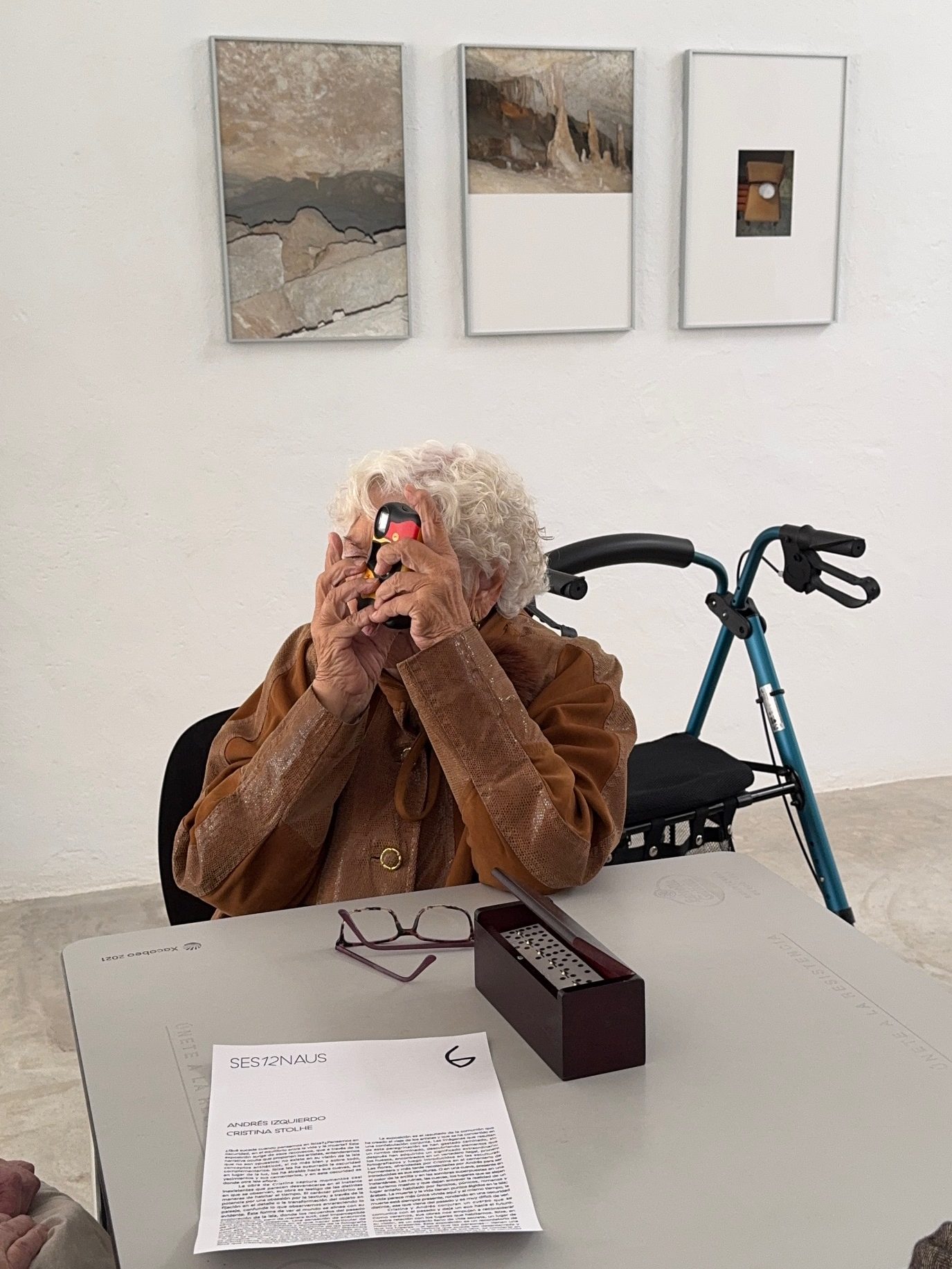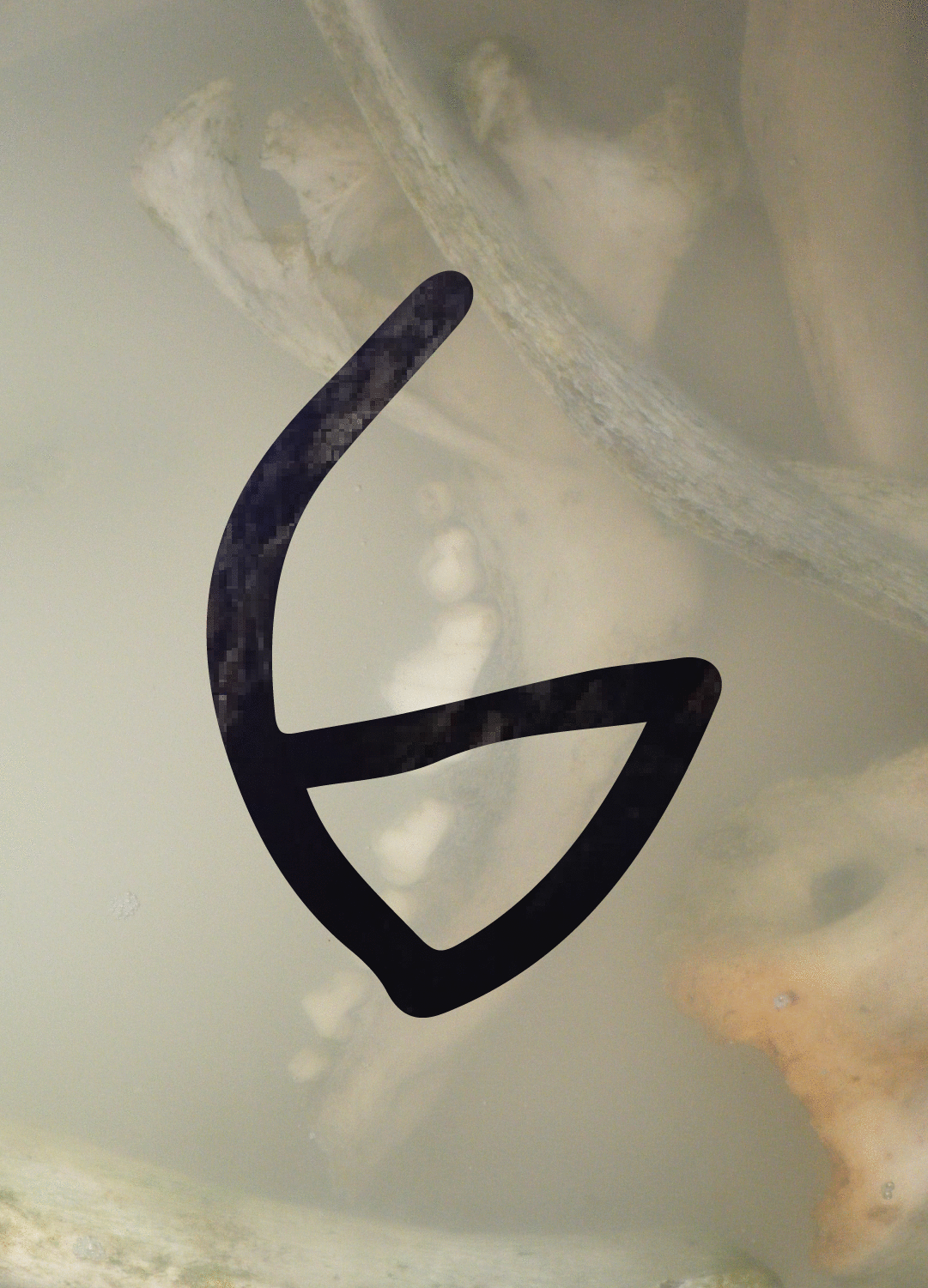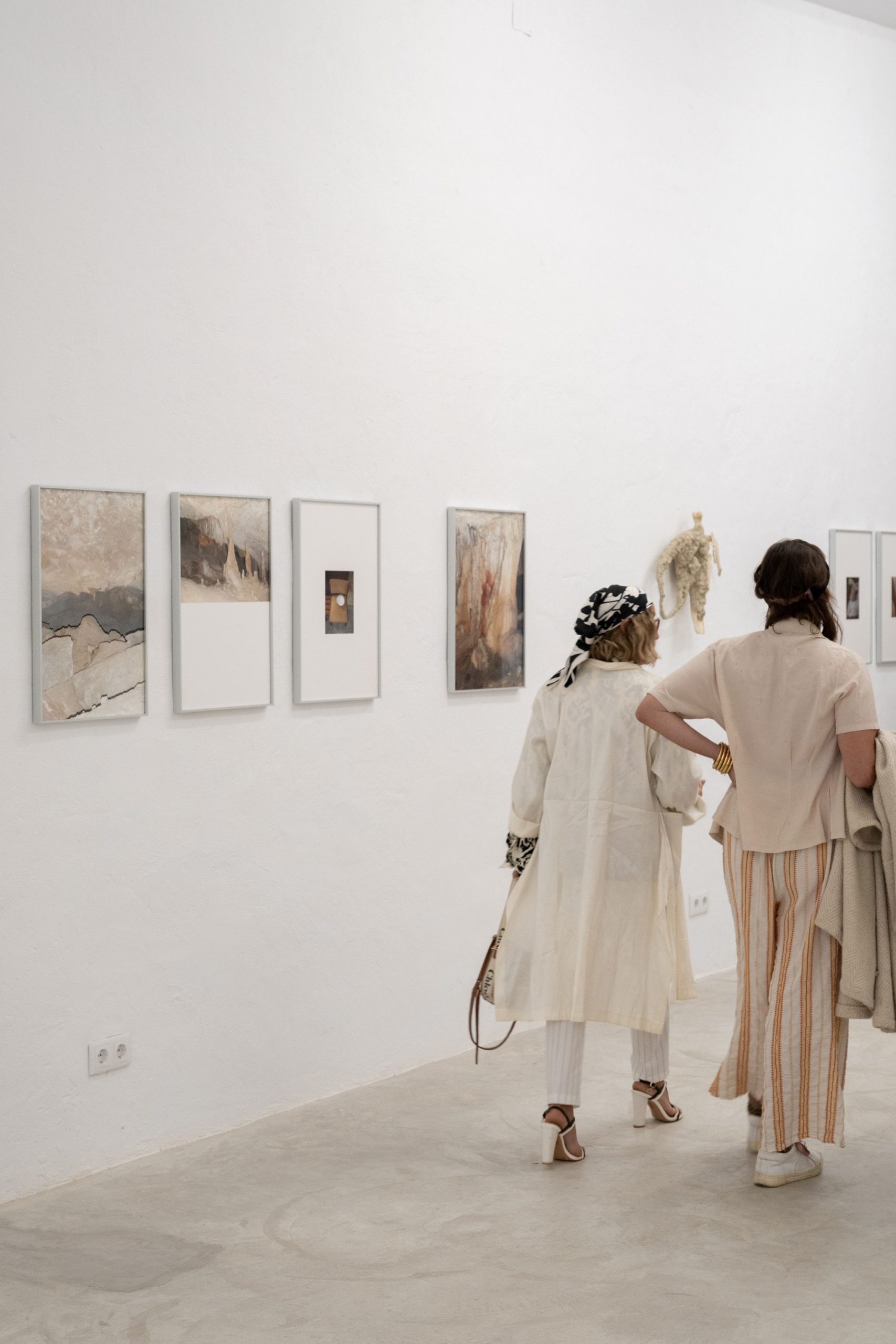RESIDENCY / CRISTINA STOLHE & ANDRÉS IZQUIERDO / 6

6
Cristina and Andrés conjure up a dialogue that communicates with the past and resonates into the future
This exhibition is the result of the communion created by the artists' journey, which has become a joint endeavour. The images resulting from this pilgrimage have been created on foot, without a specific direction, discovering elements that have later acquired an extraordinary significance: the bones, found in an illegal dump, first photographed and then added to the sculptures. The flowers, offered by Cristina in the cemetery of Formentera and later collected by Andrés to be included in his sculptures. Or in a cave, present in the colour of the clay and in the shadows superimposed in a snapshot. The ruins, the caves, the places that are far away from mass tourism and that give a glimpse of the reality of a place once inhabited by Phoenicians, Punics, Romans and Arabs.
Cristina's work captures virtually non-existent moments that seem to vanish the instant they are observed - her work is a witness to the different ways of inhabiting time. The pictorial character is enhanced by an obsession with texture - through her obsession with detail or the transformation of the object into a landscape, she obscures what we observe by rarefying the obvious. This way of seeing the world is aligned with her exploration of the island, where memories of the past are present, but subtly - almost imperceptibly - and disguised as the present. A sense of anachronism is also reflected in the specific approach of each practice: the immediacy and technology of Cristina's photography is the counterpoint and balance of Andrés' pieces. His works are an account of the alchemical but extractivist nature of sculpture: clay collected in the mountains by himself, pine resin, bones, oil. His sculptures explore transcendence through movement, between what rises towards the sky - what is released - and what sinks into the earth - what is returned. Andrés captures this tension between seemingly opposing forces, narrating an experience of Ibiza that transcends the purely corporeal.
Dates: October 12 to November 16, 2024.
Exhibition visits: By Appointment only. Schedule your visit at info@ses12naus.org.
Address: La Carpintería. Riu Arno 58 (Can Bufí). Ibiza.
Supported by:
Andrés Izquierdo

Bio
Andrés Izquierdo (Madrid, 1993) makes use of psychoanalysis and allegory to inspire an exploration of childhood, grief and the restorative qualities of space and the object. Using a number of different and varied media—including mobile sculptures, furniture design, figurative ceramics, marker pen drawings and architectural installations— his works are driven by a juxtaposition of contrasting anarchic yet structured conditions, earth and sky, biology and theology, or emergence and dissolution. Fascinated by what is and yet at the same time isn’t, Izquierdo interweaves physical presence, that is, landscape, cosmology and phenomena with conscious contemplation in the form of intrusive thoughts, daydreams and other bodily sentiments and stimuli.
Project:
Cristina Stolhe

Bio
"Today I take photos, tomorrow who knows."
In her work, Cristina Stolhe (Pontevedra, ES, 1993) examines the experience of daily life through photography. Using analogue and digital cameras and mobile phone camera in particular, she explores the true essence of life while at the same time speculating, conjecturing with “what’s there?” imbuing her images with emotions that may not be immediately apparent. Stolhe’s scenes evoke a sense of nostalgia, family feeling, yet they also express the intimacy of the present moment viewed through a slow and voyeuristic lens, attempting to appreciate the moment and capture it for eternity. In one way it invites us to consider how our individual experiences and memories make up our lives and identities.
In 2018 her first book, Random Pictures Book, was published by Terranova, as a paean to mobile phone photography, and in which she explores today’s overconsumption of images.
Project:
6 (Andrés Izquierdo & Cristina Stolhe)
